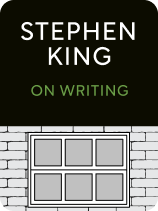

This article is an excerpt from the Shortform summary of "On Writing" by Stephen King. Shortform has the world's best summaries of books you should be reading.
Like this article? Sign up for a free trial here .
Do you want to know how to write dialogue in a story? Do famous writers like Stephen King have advice on how to write effective dialogue?
Learning how to write dialogue in a story can be a challenge. Good writing should include dialogue that sounds like real-life conversations and helps get a point across. Stephen King covers how to write dialogue in his book On Writing: A Memoir of The Craft.
Keep reading for tips on how to write dialogue in a story, and why some people might have a better sense of how to write a conversation.
How to Write Dialogue in a Story
According to Stephen King, dialogue is what characters say. It defines who they are and what they’re like.
A common rule of writing is “show, don’t tell.” Instead of narrating what a character is like, show it through their speech. Through dialogue, a reader can tell if a character is witty or dull, transparent or sneaky, empathetic or cold. These are important parts of knowing how to write dialogue in a story.
- For example, instead of narrating that a character is poorly educated and never went to school, show how he fumbles any word beyond a basic vocabulary, and how other characters react to that.
The best dialogue sounds truthful—a reader believes that real people would talk that way. King includes a conversation from Elmore Leonard’s Be Cool:
- “You doing okay?”
- “You want to know if I’m making out?”
- “I mean in your business. How’s it going? I know you did okay with Get Leo, a terrific picture, terrific. And you know what else? It was good. But the sequel—what was it called?”
The dialogue sounds credible, and without any other description or narration you can picture the people saying these words. Good dialogue sounds like you’re eavesdropping on a real conversation. This is one example of how to write a conversation.
Wooden dialogue sounds forced and grates on the ear. This is what you should remember when thinking about how to write dialogue in a story.
- King gives a quote from H. P. Lovecraft: “Nothin’… nothin’… the colour… it burns… cold an’ wet… but it burns… it lived in the well… I seen it… a kind o’ smoke… jest like the flowers last spring… the well shone at night.”
Writers vary in their ability to write good dialogue. Part of it depends on how writers interact with people. Writers who write the best dialogue like listening to other people, absorbing their rhythms, accents, and slang. Recluses often don’t know how real people talk and so find it hard to make their characters talk convincingly when they learn how to write dialogue in a story.
People might also just be born with or without an ear for dialogue, the way some musicians have perfect pitch. Some writers are accomplished in all other parts of writing except for dialogue, which makes King think recognizing good dialogue is somewhat inborn. Some people just know how to write a conversation, and others don’t.
When you write truthful dialogue, you might use profanity or otherwise blacklisted words. King grew up in the lower middle class and portrays how colorfully they talk. You might get criticism from pearl-clutchers, but don’t be deterred—you should never violate the promise you make with the reader to tell the truth, no matter how to decide to write a conversation.
For Stephen King, dialogue is essential. It helps show characters as real and helps move the story. These are important things to keep in mind when you learn how to write dialogue in a story.

———End of Preview———
Like what you just read? Read the rest of the world's best summary of Stephen King's "On Writing" at Shortform .
Here's what you'll find in our full On Writing summary :
- Stephen King's personal writing habits that led to superstar books like Misery and It
- How to make a story and characters feel real
- Why you should never use adverbs






